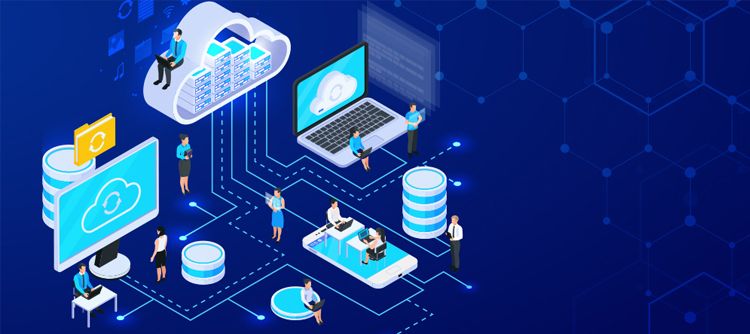
Subscribe to our Blog
We're committed to your privacy. SayOne uses the information you provide to us to contact you about our relevant content, products, and services. check out our privacy policy.

Ranju R July 28, 20228 min read

Generating table of contents...
Microservice and monolithic applications are vastly different. A monolithic application is broken up into smaller parts to develop the microservices architecture. In 2021, approximately, 45 % of respondents in a survey stated that data analytics or business intelligence applications used microservices. In this post, we will be discussing some aspects of microservice applications. Let’s get started.
The microservices architecture is a software development approach wherein a single application consists of a set of small services. Each microservice runs its own process and communicates with lightweight mechanisms (often APIs). These services, built around business capabilities, are independently deployable with the help of fully automated machinery. Centralized management of these services is very minimal. Furthermore, the services can be programmed using different languages. Again, it is also possible to use varied data storage technologies.
Microservices communication is crucial, with two main types: synchronous and asynchronous.
Synchronous communication uses direct interactions, often via REST or gRPC APIs, ensuring real-time responses but can lead to service dependencies and potential latency issues.
Asynchronous communication uses message brokers like RabbitMQ or Kafka, allowing services to send and receive messages independently. This approach improves decoupling and system resilience, making it ideal for non-real-time tasks.
The choice between these methods depends on application needs, balancing real-time responsiveness with flexibility and scalability.
Read our blog “Top 5 Microservices Trends to Take Note of in 2022”.
Besides, the process involved in adding or removing functionality within microservices architecture is less painful compared to that related to a traditional monolithic application wherein it is difficult to untangle the services that comprise the performance of the monolith. Initially, developers may be able to add new code to the existing code, but upgrading a monolith becomes increasingly difficult without shutting down the entire program as it often grows too complex over time. Breaking a monolith application into component functions leads to the development of a microservices application. Thus, redesigning a monolith as a set of loosely-connected microservices enables developers to avoid the challenges and delays experienced while upgrading an application later on.
The Three key components of the microservice architecture are:
The microservices, the self-contained smaller services, form the main component of this architecture. They can be created in any language and they function independently of each other. This makes implementation easy through different software teams.
An easy development and deployment directly point to a microservices architecture but with such comes complexities, particularly in the communication between services. In that regard, the pattern of a circuit breaker comes into prominence.
A circuit breaker microservices architecture prevents cascading failures in a service by preventing it from becoming unresponsive and failing. The circuit breaker monitors the interaction between microservices and can therefore identify the behavior of a service that is misfunctioning and automatically redirect requests to a fallback service or return an error message to the user. This increases system reliability but at the same time improves the experience of the user and prevents one microservice failure from knocking an entire application offline.
Start your microservices journey today! Give us a call!
Apart from offering an additional layer of infrastructure, the service mesh enables extra security and ensures a more predictable behavior as far as communication is concerned. Moreover, the service mesh makes use of a sidecar pattern and sidecar proxies to enable dynamic messaging. This setup, in turn, allows developers to avoid using code when building parts of an application.
The API gateway is an essential and integral part of the microservices architecture as it enables communication between services.
When it comes to microservices application development, there is a lot of flexibility with respect to programming languages that can be used. Developers can use a programming language of their choice to develop microservices applications. However, it is best to choose a language that is helpful in meeting project goals to ensure enhanced development efficiency.
Java: This programming language is good in terms of code readability, especially while working on complex systems. All Java frameworks such as Spring Boot, Spark, Restlet, DropWizard, etc., are suitable for creating a microservice-based application. Additionally, Java ensures better connectivity to model components, back-end resources, and user interfaces.
C++: This programming language’s object-oriented feature helps developers write faster and more portable programs. Furthermore, C++ offers speed and excellent concurrency support. Besides, C++ takes less time to compile and execute programs. As such, C++ is the best choice whenever performance is important.
Download our ebook “Modern commerce - It's an evolution from the monolith to microservices”.
Python: When there is a need to write clean code, Python is the best choice. This interpreted language enables ongoing changes and builds APIs using web protocols like HTTP and toolkits for the discovery and manipulation of remote objects. Other features include faster prototyping and adaptability to older programming languages like PHP.
Ruby on Rails: This programming language is popular because of the flexibility, scalability, code quality, and speed of development it offers. Furthermore, the object-oriented language supports all major platforms and is compatible with other languages, inheritance, and garbage collection. Ruby is best suited for both start-ups and large enterprises.
Golang: Google’s Go language is also good for developing microservices-based applications. Other features include the capability to handle loads, simple and logical syntax, great speed, concurrency support, and a powerful library.
In 2007, Netflix launched its movie-streaming service. By 2008, the OTT platform was facing severe service outages as well as scaling challenges. In the same year, Netflix started shifting to the cloud platform when it experienced serious database corruption. For three days, Netflix struggled to ship DVDs to its members. This prompted it to move highly reliable, horizontally scalable, and distributed systems into the cloud.
Looking for the best microservices vendor? Give us a call today!
The process of refactoring the monolithic architecture began in 2009 and as the first step moved its non-customer-facing movie-coding platform to the AWS cloud. The entire process of migrating to the microservices architecture was completed by 2012.
At SayOne, we offer independent and stable services that have separate development aspects as well as maintenance advantages. We build microservices especially suited for individuals' businesses in different industry verticals. In the longer term, this would allow your organization/business to enjoy a sizeable increase in both growth and efficiency. We create microservices as APIs with security and the application built in. We provide SDKs that allow for the automatic creation of microservices.
Our comprehensive services in microservices development for start-ups, SMBs, and enterprises start with extensive microservices feasibility analysis to provide our clients with the best services. We use powerful frameworks for our custom-built microservices for different organizations. Our APIs are designed to enable fast iteration, easy deployment, and significantly less time to market. In short, our microservices are dexterous and resilient and deliver the security and reliability required for the different functions.
Refactoring to microservices enabled Netflix to overcome the service outage problem and scaling challenges. By 2015, the API gateway of Netflix was handling as many as two billion daily requests and was managed by more than 500 cloud-hosted microservices. By 2017, the number of loosely coupled microservices increased to 700. Today, Netflix streams nearly 250 million hours of content every day to more than 139 million subscribers in as many as 190 countries. Netflix continues to grow!
In conclusion, moving over to the microservices-based architecture is the best option for an organization that wants to grow faster.-

We're committed to your privacy. SayOne uses the information you provide to us to contact you about our relevant content, products, and services. check out our privacy policy.

About Author
Helping businesses scale-up their development teams ( Python, JavaScript, DevOps & Microservices)

We collaborate with visionary leaders on projects that focus on quality